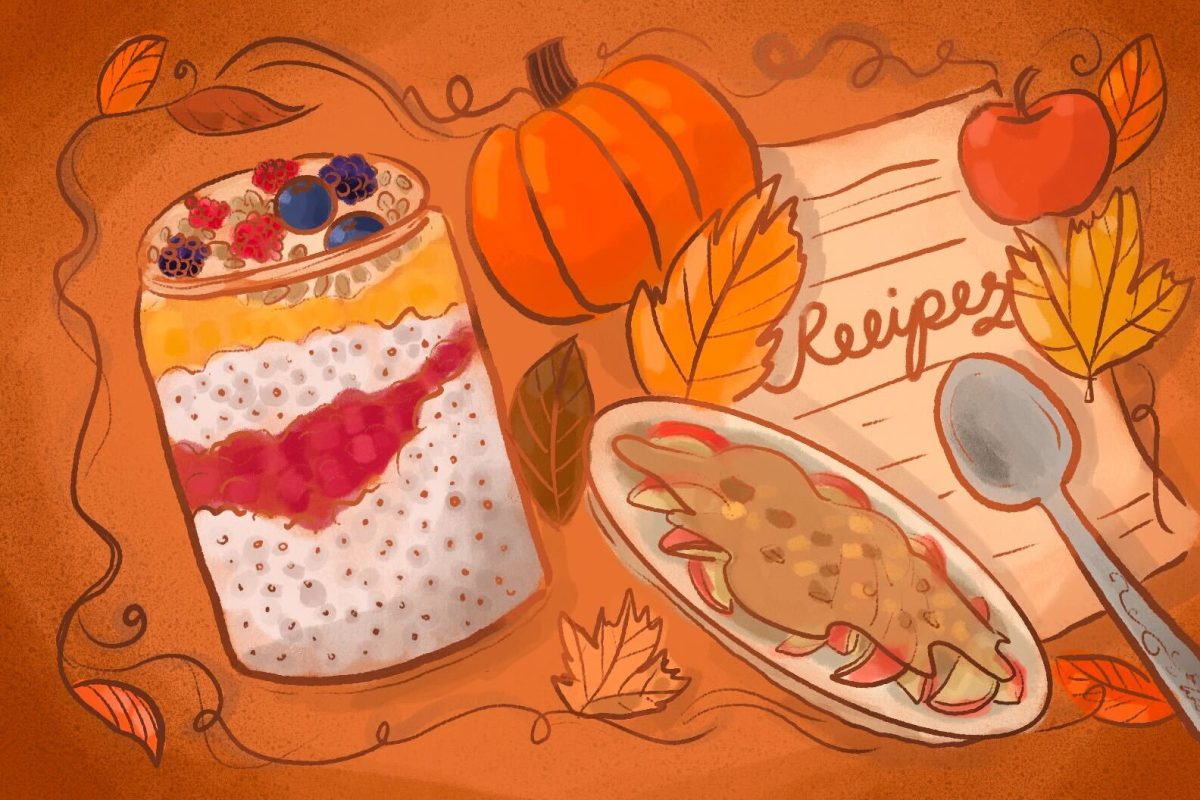On a chilly October morning of 2020, I found myself nose-deep into piles of vintage clothing at Kobey’s Swap Meet. Wandering around with my coffee in hand and a curious nature, I gravitated towards a vendor that displayed a vintage Britney Spears T-shirt. As I continued to look around, I found myself grabbing slip dresses, mini skirts, and a black sheer Halloween-esque dress —that I still have yet to wear. As I grabbed a beautiful black mesh dress with red accents and floral detailing, I decided it was time to have a little self-control, so I headed towards the vendor to pay. Finishing up a small conversation with the seller, I took my items and said one last thank you. As I finally walked away, I realized I didn’t catch her shop name. Turning my head back I caught a glimpse of her shop name on a small poster board: Revival Era Vintage.
Little did I know that my shopping addiction would get the best of me and I would become a frequent attendee at Kobey’s Swap Meet. Always finding myself at the Revival Era Vintage booth, I would strike up a conversation with the seller and ultimately became fascinated with her involvement with the world of vintage clothing, reselling, and the sustainable fashion community of the city.
With fashion at her fingertips, meet Heidi Cantrell, the creator of Revival Era and San Diego’s own vintage clothing reseller. Taking inspiration from old movies, TV shows, and eccentric musicians, Cantrell has been influenced by the style of the 20th century.
“I’d say my style comes from the ’90s and ’70s looks with some western flair, influenced by my home town. Combining eras is extra fun and creates such a unique look. Some of my style inspiration comes from my favorite ’90s shows like ‘Dawson’s Creek,’ ‘Buffy the Vampire Slayer,’ ‘90210,’ ‘That’s ’70s Show,’ ‘Charmed,’ and ‘Dazed and Confused.’ One of my favorite artists that I believe has the best ’70s and ’90s looks is Mazzy Star. A lot of my other inspiration comes from other vintage sellers in San Diego who focus on different eras, like pieces from the ’40s and ’50s.”
Coming from a small town in California, she didn’t start to explore her sense of style until starting college. Feeling lost in the world of academia — as does every college student — she decided to go with the path that felt true to herself.
“I was a full-time student working two restaurant jobs and switching my major every other semester. I was lost and unsatisfied with my direction in life. Shortly after, I quit my job and stumbled upon an estate sale by my house. I stopped trying so hard to find something to do with my life and just did what came naturally to me.”
With her adventurous nature and desire to start investing time into the world of vintage clothing, she began to explore the world of reselling and what it had to offer to her.
“Shortly after I quit my day jobs I stumbled upon an estate sale by my house. I always felt relaxed when thrifting and found so much joy in curation. I spent all of my money on an old lady’s closet and dedicated a few months to listing on Depop to make rent and bills. After my Depop took off, I started expanding my style by modeling outfits for my shop. At the time, Y2k was just becoming a term within the vintage community and many people rejected that it should even be a thing. With consistency and drive, anyone can start their shop — quitting your day job also helps! The fast fashion industry pushes a style agenda onto the masses and I fell hard into their trap for years. They also use unethical practices for labor and cheap fabric made of chemicals — meant to break down quickly. Vintage clothing lasts forever, lets you choose your style, promotes sustainability and small businesses — what’s better than that?!”
Striving to grow her small business, Cantrell has started to expand her networking past small pop-up events, and into store clothing racks.
Cantrell said, “I started selling at the swap meet about a year ago, thanks to fellow sellers who pushed me to transition offline. Doing so helped me create a bigger following, connect with like-minded people, expand my style and make connections in the community. Selling in person is the best way to move forward as a vintage seller. Now I primarily do smaller markets, Instagram sales, and in-store at Day to Day Vintage in North Park. My favorite part about curating racks in stores is seeing how people respond to selections in a higher-end setting. Working for yourself can be overwhelming but you get to choose how everything is executed. You decide how to source clothes, what platform to sell on, and get to be a part of the best community out there. I’ve noticed that you can’t overthink what you’re selling, if you pick cool things, other people will notice. Being authentic to your style will always transcend your customers and brand. If you commit to your brand and have confidence in your ideas, no one will ever think otherwise. Don’t be afraid to take risks, stay true to your style and meet as many people as possible when first starting your shop.”
With her spunky personality and eccentric nature, Cantrell has grown her community of fashion within San Diego to something she never imagined possible. Being in a community where reselling is quite male-dominated, she has created a safe space for her and her small business to thrive as a woman.
“I accepted late into my college career that I 100 percent would be doing this after graduation,” Cantrell said. “It’s unpredictable and exciting while letting me have a social or independent workspace, depending on my mood. There are many different avenues and boredom is never an option.”
Photo courtesy by Luis Montejo








